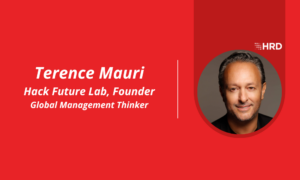HR Distinction Spotlight: Rebuilding a workforce at Warburtons
- 5 Min Read
HRD Connect examines Warburtons’ change management and organisational journey. They intended to completely overhaul their workforce, to ensure that their employees were more efficient and fully prepared for the future.
- Author: Louron Pratt
- Date published: Sep 2, 2019
- Categories

Many organisations strive to go through a transformational journey and guarantee global success. To overcome these challenges, businesses must undertake numerous changes over many years. This can heavily impact culture, talent, and strategic focus. Through these monumental changes, HR plays a key role in maintaining and aligning a consistent experience for their workforce in times of uncertainty.
This week, we look at Warburtons’ change management and organisational journey. They intended to completely overhaul their workforce, to ensure that their employees were more efficient and fully prepared for the future.
Warburtons is a family-owned business that dates back to 1876. Their goal has always been to become Britain’s Best Food Business. The food industry is extremely competitive, meaning that regularly creating industry-beating products is crucial.
The food market is forever changing, and for their model to be sustainable, Warburtons aimed to create a more agile team. If they were to succeed in this challenge, they would need a multiskilled workforce, who can work flexibly across different manufacturing areas. This would enable innovation, and bring a plethora of commercial benefits. Going through this change would also aid the customer experience, supporting fresh products and matching the working hours to support the high customer demand.
Although the benefits of this strategy would be endless, it would be the biggest people transformation in the history of Warburtons, changing everything about the people working at the company.
To undergo these monumental changes, Warburtons had to renegotiate employment terms for over 1,600 people, and more importantly, communicate with them throughout the process. The organisation made it clear that any changes that were implemented had to be achieved ‘with people’ and not simply ‘done to them’. It was crucial to winning the hearts and minds of their workforce, as people were the key to successfully creating a more versatile workforce.
Warburtons set out a number of principles before undertaking this change management journey:
- Telling it straight: Warburtons wanted to take their people on an exciting journey. Consistently sharing the process with their workforce through transparency and clarity was key.
- Bringing it home: The culture of supporting the Warburtons family was important to their identity, and they intended to consistently improve this by equipping their leaders with the necessary skills.
- Making it personal: Each individual was spoken to and was given a full descriptive idea of how this new strategy would work for them. Face-to-face communication was essential in providing an opportunity for feedback.
- Building behaviours: Warburtons wanted to equip their leaders with the right skills. This gave them the opportunity to maintain and improve their behaviours, to deliver the change needed to succeed in the future.
- Including everyone: Ensuring that everyone was included, and felt valued, was key in pushing this initiative forward.
However, while acknowledging these principals, the most challenging part was distributing this information to their workforce. Warburtons had to rely heavily on their local managers to ensure that their workforce had a better understanding of the change that was occurring.
“We relied on local leaders to communicate with their team members”, said Paul Hickson, Internal Communications and Engagement Manager, Warburtons.
“We committed to give them the technical training, understanding and behavioural skills to bring the message to life, through a tailored development programme called Breakthrough Thinking”
“We built up an understanding of the changes through co-ordinated phased communications, answering three big questions: ‘Why Change?’, ‘what’s changing?’, and ‘what does this mean for me?’”
The leadership team acknowledged that Warburtons’ transformational change was a significant journey, and would take time to bring everyone along together patiently. In total, there were more than 470 group briefings and over 3,200 one-to-one meetings. Crucially, these meetings succeeded in winning the hearts and minds of the people at Warburtons.
Not only did Warburtons succeed in leading the biggest transformation in their history, but it also brought their people much closer together. Through this change transformation, the business is now better situated for change, and have an adaptable workforce prepared for any uncertainty in the future. Through their engagement survey held in March 2018, they also found that their employee engagement had increased to 82%
“Warburtons and our employees can now look forward to a more sustainable future with greater job security. We have a mindset that reflects our rich heritage and also meets today’s challenge”, said Paul Hickson.
Rather than dictating change from the top, the company started a conversation at the grassroots and took its employees on a journey. Through months of careful communications, the company succeeded in maintaining staff happiness and engagement. It set out the value of making employment terms more flexible, how this would benefit the business – and what each employee would gain.
This thoughtful, collaborative approach paid off. Over just three years, Warburtons are still reaping the benefits both internally and externally. Many businesses would do well to follow this approach when looking to rehaul their employee structure in the future.








